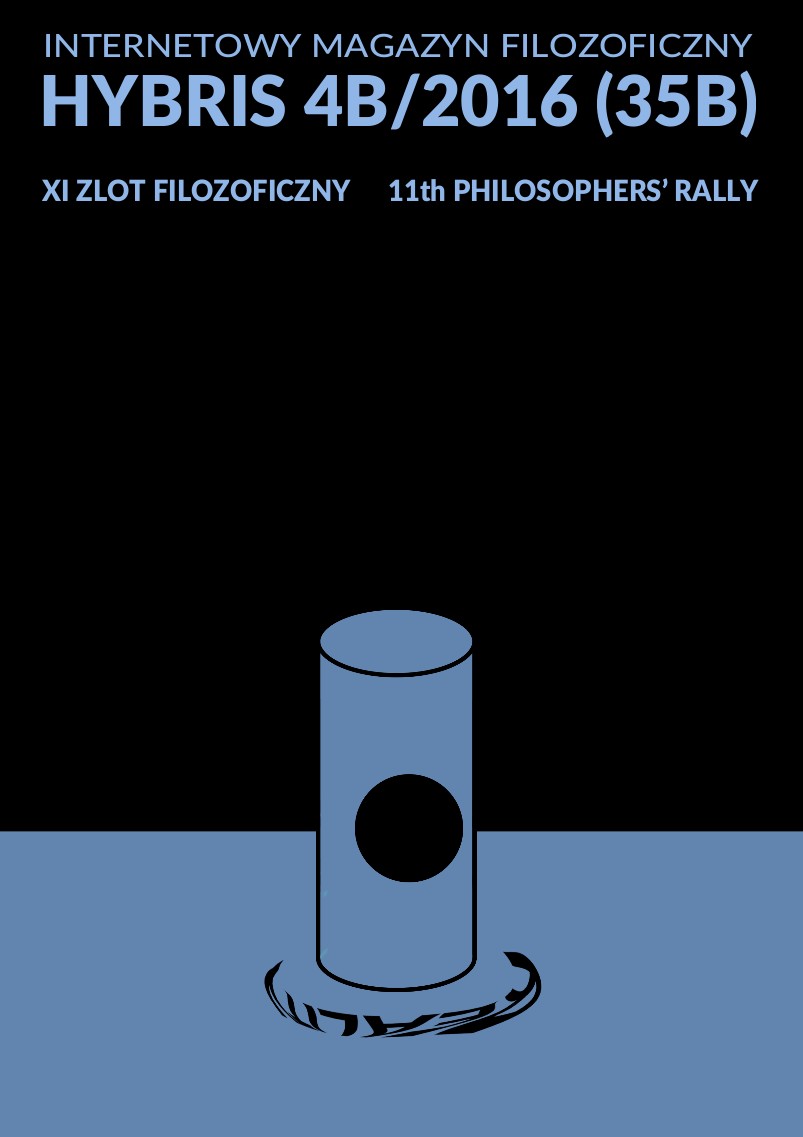Problem odniesienia obrazów halucynacyjnych pojawiających się w kontekście doswiadczeń duchowych
DOI:
https://doi.org/10.18778/1689-4286.35.2.10Keywords:
hallucinatory experiences, spiritual experiences, consciousnessAbstract
The goal of this article is to discuss a theory of reference for hallucinatory experiences. Firstly, my paper will be concerned with the theory of perception underlying common definition of hallucination. Secondly, I will present three main theories of reference for experiences given in different kinds of altered states of consciousness. These three theories are: neuroscientific, supranaturalistic and psychoanalytical. Consecutively I will present arguments for maintaining that classical theories are examples of semiotic reductionism. In the main part of this paper I will present an anti-reductionist framework for a reference of hallucinatory experience, based on a phenomenological analysis of particular kind of experience not caused by external stimulus, that is, mystical experience. This anti-reductionistic theory will claim that a proper reference of certain kinds of altered states of consciousness is a true symbol.
References
American Psychiatric Association, 2013, Diagnostic and Statistical Manual of Mental Disorders DSM-5, Washington DC–London.
View in Google Scholar
DOI: https://doi.org/10.1176/appi.books.9780890425596
Blom, J. D., 2010, Dictionary of hallucinations, Nowy Jork.
View in Google Scholar
DOI: https://doi.org/10.1007/978-1-4419-1223-7
Blom, J. D., Sommer, I. E. C. (red.), 2012, Hallucinations, Research and Practice, Nowy Jork.
View in Google Scholar
DOI: https://doi.org/10.1007/978-1-4614-0959-5
Dobkin de Rios, M., Rumrrill, R., 2008, A hallucinogenic tea laced with controversies — Ayahuasca in the Amazon and in the United States, Westport.
View in Google Scholar
DOI: https://doi.org/10.1111/j.1708-8305.2009.00325.x
Freud, S., 2009, Sztuki plastyczne i literatura, przeł. R. Reszke, Warszawa. Gadame,r H.-G., 2004, Prawda i metoda, przeł. Baran B., Warszawa.
View in Google Scholar
Griffith,s R. R., Richards, W. A., McCann, U. D., Jesse, R., 2006, Psilocybin can occasion mystical-type experiences having substantial and sustained personal meaning and spiritual significance, „Psychopharmacology”, 187, 268–283.
View in Google Scholar
DOI: https://doi.org/10.1007/s00213-006-0457-5
Hood, R. W. Jr., 2006, The common core thesis in the study of mysticism, [w:] MacNamara, P. (red.), Where God and science meet, Vol. 3, London-Westport, s. 119–139.
View in Google Scholar
James, W., 2011, Doświadczenia religijne, przeł. Hempel, J., Kraków.
View in Google Scholar
Jung, C. G., 2009a, Aion — przyczynki do symboliki jaźni, przeł. Reszke, R, Warszawa.
View in Google Scholar
Jung, C. G., 1983, Archetypy i symbole, przeł. Prokopiuk, J., Warszawa.
View in Google Scholar
Jung, C. G., 2011, Dynamika Nieświadomości, przeł. Reszke, R., Warszawa.
View in Google Scholar
Jung, C. G., 2009b, Psychologia a alchemia, przeł. Reszke, R., Warszawa. MacRae, E., 2004, The ritual use of ayahuasca by three Brazilian religions, [w:] Drug Use and Cultural Contexts “Beyond the West”, Coomber, R.i South, N. (red.), Londyn.
View in Google Scholar
Pahnke, W. L., Richards, W. A., 1966, Implications of LSD and Experimental Mysticism, „Journal of Religion and Health”, 5, 3, 175–208.
View in Google Scholar
DOI: https://doi.org/10.1007/BF01532646
Downloads
Published
How to Cite
Issue
Section
License

This work is licensed under a Creative Commons Attribution-NonCommercial-NoDerivatives 4.0 International License.






